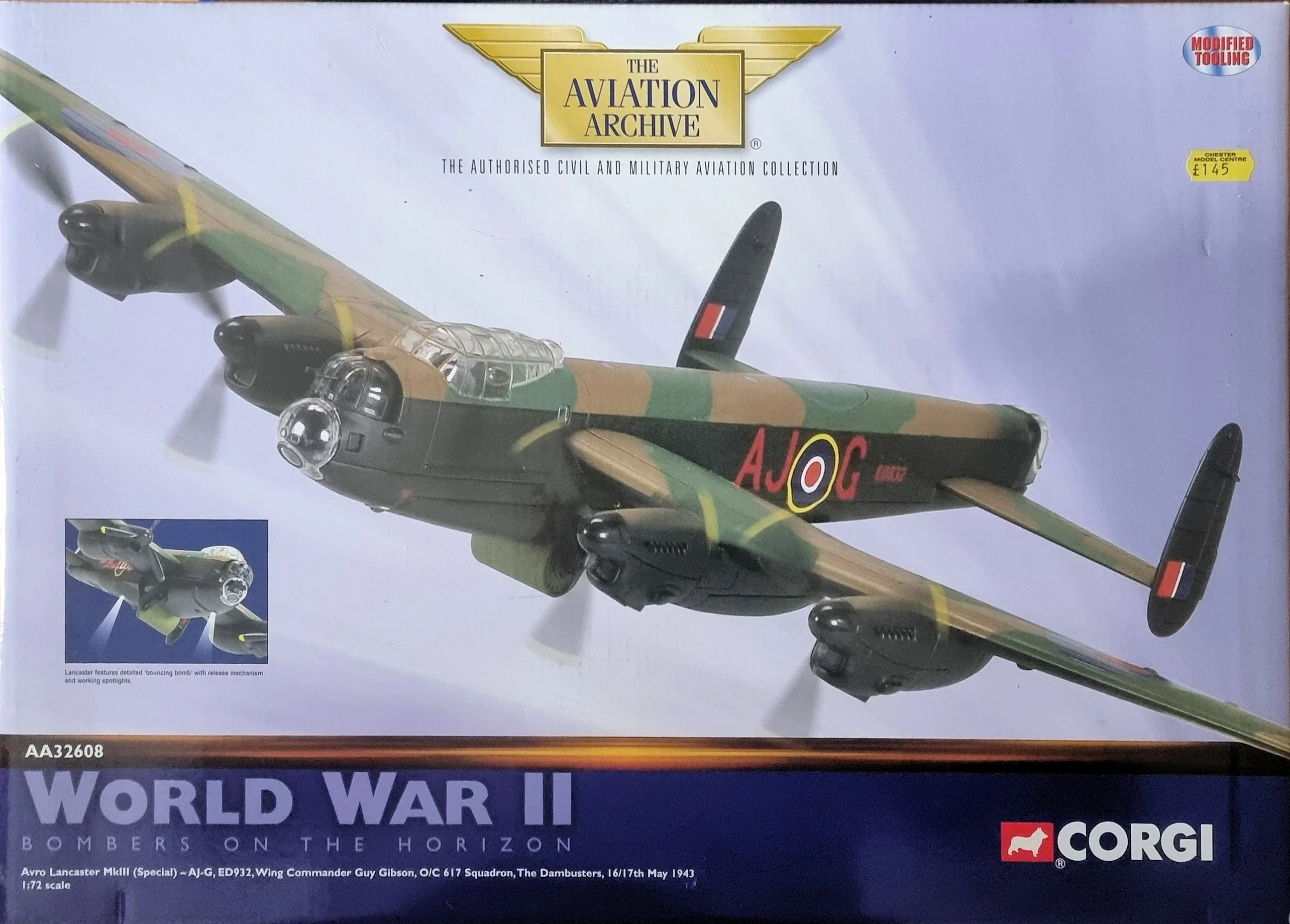Corgi Aviation Archive Collector Series AA32608
Avro Lancaster B.Mk III Diecast Model RAF No.617 (Dambusters) Sqn, ED932, Guy Gibson, Ruhr Valley Dam, Germany, Operation Chastise, May 16th 1943, w/Working Targetting Spotlights
During World War II, a bombing raid was carried out in 1943 that targeted the dams in Germany's Ruhr Valley. These dams supplied hydroelectric power to the heart of Germany, making them a vital target in the war effort. Guy Gibson, a legendary leader within Bomber Command, was tasked with forming a special squadron known as the Dambusters to execute the attack. The raid, known as 'Operation Chastise', took place on the night of May 16th/17th, 1943. 19 modified Lancasters, including Gibson's own, AJ-G, of 617 Squadron, took off from Scampton. Each aircraft carried an 'upkeep' mine, also known as a bouncing bomb, developed by Dr. Barnes Wallis. The raid was successful, as both the Mohne and Eder Dams were breached. This resulted in a torrent of water flooding the whole of the valley, disrupting industry and communications.
The aircraft used in this raid were adapted Avro Lancaster Mk IIIs, also known as B Mark III Special. To reduce weight, much of the armor was removed, as was the mid-upper turret. The bomb, with its unusual shape, meant that the bomb doors had to be removed, and the bomb itself hung partially below the body of the aircraft. It was mounted in two crutches, and before dropping, it was spun up to speed by an auxiliary motor. Dropping the bomb from 60 ft (18 m) at 240 mph (390 km/h) required expert crews, intensive night and low-altitude flight training, and solutions to two technical problems. The first problem was to know when the aircraft was at the correct distance from the target. The two key dams at Möhne and Eder had a tower at each end. Aiming was facilitated by a special device with two prongs making the same angle as the two towers at the correct distance from the dam. The second problem was to measure the aircraft's altitude, as the usual barometric altimeters lacked sufficient accuracy. Two spotlights were mounted, one under the nose and another under the fuselage, so that at the correct height, their light beams would converge on the surface of the water.
The Avro Lancaster B.Mk III was designed to meet a specification for a new generation of "worldwide use" medium bombers. The Lancaster evolved from an unsuccessful two-engine aircraft called the Manchester. The heavier Lancaster had four engines and an extensive bomb bay, with later versions capable of carrying 22,000 lb bombs. The Lancaster was primarily used as a night bomber and became most famous for its role in the 1943 "Dam Buster" raids on Germany's Ruhr Valley dams. Between 1942 and 1945, Lancasters flew 156,000 sorties, dropping 608,612 tons of bombs on enemy targets.
Corgi's 1:72 scale Lancaster series includes many variants, all of which are constructed using a large number of diecast metal components. All crew positions are occupied; there is a pilot and navigator in the cockpit, a bombardier lying prone behind the perspex nose cupola, and gunners occupying the rotating turrets. The overall presentation of this model has led to its popularity, from the accurate recreation of the Lancaster's distinctive airframe to the simulated fabric control surfaces with photo-etched metal aileron trim linkages and twin oval rudders. The model comes with a heavily constructed all-metal display stand to support this massive aircraft for in-flight display.

 Cart(
Cart(










